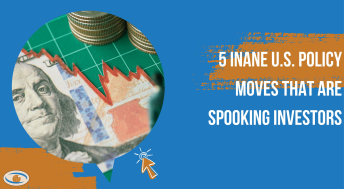Risk/Return Profile in the Portfolio Management Process
Portfolio management involves a lot of personal decisions and preferences, and in this blog, we are going to talk broadly about some key risk management practices in portfolio management that may not apply to all investors. An investor needs to assess their own level of comfortability, ability and willingness for risk. Most investors focus on the return aspect of the portfolio management process, although the risk element is just as important. Developing a good framework for risk management can ensure that an investor is in an appropriate risk/return profile. Here are a few risk management practices that we like within portfolio management.
1. Proper Position Sizing
The first key risk management practice we want to discuss is proper position sizing within an investment portfolio. Position sizing is a personal decision, but there are a few key factors to consider when deciding how much weight an individual position should be given within a portfolio:
- The position should be large enough that if an investor is right, it contributes to their net worth
- The position should be small enough that if that investor is wrong, it will not be a major setback
- The volatility of an individual name should be taken into consideration – less volatile names can have a higher weighting and vice versa
- Beware of overconfidence – if it seems too easy, it probably is
A lot of the practices around proper position sizing involve effective diversification. While this is a personal decision, in general, we are comfortable with letting a position reach a maximum weighting of around 7%. The theory is that on average the market returns somewhere between 6% to 8% per year, and if an investor has a stock position at a 7% weighting that subsequently goes to 0% while all other positions in the portfolio remain flat for the year, the investor is only setback by about one year (assuming the market returns ~7% in that year).
There is no right or wrong number of stocks that an investor should hold in one’s portfolio, however, many studies have shown that a portfolio with 20 or more stocks helps to remove company-specific risk from a portfolio. To use an example, at the extreme end, a portfolio with only one stock will be severely exposed to the individual risks of that company, whereas an investor that increases the number of stocks in a portfolio will reduce the individual risks from the underlying companies. The investor is then theoretically only left with the risks of the broader market (interest rates, inflation, recession, etc.). There is also a risk of over-diversifying, where too many individual stocks will begin to erode one’s ability for higher returns.
Source: Stocktalk
2. Rules and Rebalancing
If a single position in an investor’s portfolio begins to significantly outperform the other holdings, then that investor may be overexposed to one specific sector or asset class in the market. For this reason, setting target weights for sectors and asset classes can be a good method to keep one’s portfolio from being unbalanced. Here are a few key considerations for portfolio rebalancing:
- Strategic Asset Allocation (SAA) is a strategy that enables individuals to sell winning positions to be back within a target weight and buy underperforming positions to be within an ideal weighting. Gains are realized when a position performs well and exceeds an investor's target weight’ for that specific sector or asset class and can help to mitigate periods of overvaluation
- Individual position rebalancing can be performed periodically – this can be done either monthly, quarterly, semi-annually, or annually
An example of rebalancing asset classes within a portfolio is the following. If an investor set target weights for equities, bonds, and cash to be 70%, 25%, and 5%, respectively, but after one year of investing the investors’ holdings shift to a 75%, 15%, and 10% weighting, respectively, then rebalancing can help bring weights back in line with one’s Strategic Asset Allocation (SAA).
Source: 5i Research
3. Total Portfolio vs. Account Level Portfolio
One risk in portfolio management that some investors make is by viewing a portfolio by each account (ex: RRSP, TFSA, RESP, etc.) or each individual investor (ex: spouse, child, etc.). While each account and individual will have their own unique portfolio mandates, time horizons, risk profile, and so forth, not viewing all of one’s individual accounts and individual investors as one comprehensive portfolio can leave one exposed to hidden risks. Viewing a portfolio at a household or total portfolio level can mitigate exposures to tail risk events as well as uncover concentrated positions one may not have been aware of.
The portfolio analytics section within 5i Research helps investors in this manner to provide a total asset allocation summary across an entire household or investment accounts within minutes. Upgrade to portfolio analytics today!
The Key to Managing Risks Within an Investment Portfolio
There are many things that an investor can do on a day-to-day basis to mitigate risks in their portfolios, however, a large majority of the work can be done much less frequently than every day. Portfolio rebalancing can be performed as infrequently as every year, and this practice alone can help one ensure proper position sizing is achieved within each asset class, sector, and individual position. Viewing one’s portfolio at a total portfolio level can help uncover any hidden concentrated positions that one might not be aware of, and this helps to ensure proper diversification is achieved. For most, the risk management portion is the least interesting part of identifying a proper risk/return profile, but it is equally as important as identifying the ‘return’ aspect.
Research for Today, Invest for Tomorrow.

Twitter: @5iChris






Comments
Login to post a comment.